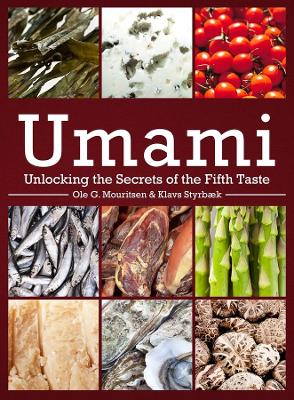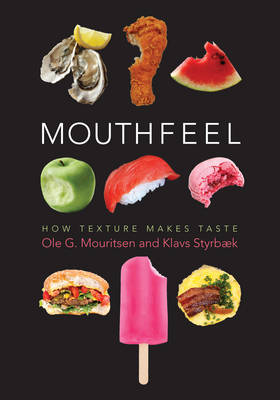Arts and Traditions of the Table: Perspectives on Culinary History
2 total works
In the West, we have identified only four basic tastes-sour, sweet, salty, and bitter-that, through skillful combination and technique, create delicious foods. Yet in many parts of East Asia over the past century, an additional flavor has entered the culinary lexicon: umami, a fifth taste impression that is savory, complex, and wholly distinct. Combining culinary history with recent research into the chemistry, preparation, nutrition, and culture of food, Mouritsen and StyrbA|k encapsulate what we know to date about the concept of umami, from ancient times to today. Umami can be found in soup stocks, meat dishes, air-dried ham, shellfish, aged cheeses, mushrooms, and ripe tomatoes, and it can enhance other taste substances to produce a transformative gustatory experience. Researchers have also discovered which substances in foodstuffs bring out umami, a breakthrough that allows any casual cook to prepare delicious and more nutritious meals with less fat, salt, and sugar. The implications of harnessing umami are both sensuous and social, enabling us to become more intimate with the subtleties of human taste while making better food choices for ourselves and our families.
This volume, the product of an ongoing collaboration between a chef and a scientist, won the Danish national Mad+Medier-Prisen (Food and Media Award) in the category of academic food communication.
This volume, the product of an ongoing collaboration between a chef and a scientist, won the Danish national Mad+Medier-Prisen (Food and Media Award) in the category of academic food communication.
Why is chocolate melting on the tongue such a decadent sensation? Why do we love crunching on bacon? Why is fizz-less soda such a disappointment to drink, and why is flat beer so unappealing to the palate? Our sense of taste produces physical and emotional reactions that cannot be explained by chemical components alone. Eating triggers our imagination, draws on our powers of recall, and activates our critical judgment, creating a unique impression in our mouths and our minds. How exactly does this alchemy work, and what are the larger cultural and environmental implications? Collaborating in the laboratory and the kitchen, Ole G. Mouritsen and Klavs StyrbA|k investigate the multiple ways in which food texture influences taste. Combining scientific analysis with creative intuition and a sophisticated knowledge of food preparation, they write a one-of-a-kind book for food lovers and food science scholars. By mapping the mechanics of mouthfeel, Mouritsen and StyrbA|k advance a greater awareness of its link to our culinary preferences.
Gaining insight into the textural properties of raw vegetables, puffed rice, bouillon, or ice cream can help us make healthier and more sustainable food choices. Through mouthfeel, we can recreate the physical feelings of foods we love with other ingredients or learn to latch onto smarter food options. Mastering texture also leads to more adventurous gastronomic experiments in the kitchen, allowing us to reach even greater heights of taste sensation.
Gaining insight into the textural properties of raw vegetables, puffed rice, bouillon, or ice cream can help us make healthier and more sustainable food choices. Through mouthfeel, we can recreate the physical feelings of foods we love with other ingredients or learn to latch onto smarter food options. Mastering texture also leads to more adventurous gastronomic experiments in the kitchen, allowing us to reach even greater heights of taste sensation.

